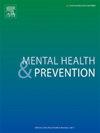Maximising the management of self-harm in schools: A collaborative, implementation science approach by secondary schools and child and adolescent mental health services
IF 2.4
Q2 Medicine
引用次数: 0
Abstract
Background
Self-harm among young people is a complex global problem. Schools could facilitate young people who self-harm to access multilevel interventions. However, schools require support and collaboration from support services such as specialist mental health to implement evidence-based best practices for self-harm. Objectives: This study in Aotearoa New Zealand sought to identify the barriers and solutions to responding to youth self-harm in schools. Methods: We utilised a co-design methodology, with schools and child and youth mental health services and examined barriers and solutions within the Consolidated Framework for Implementation Research (CFIR).
Results
Key stakeholders identified multiple systemic barriers including lack of guidelines and mental health service criterion, lack of trust between schools and mental health services and poor previous experiences. Within the CFIR framework, systemic failure rather than individual people and/or individual attributes were identified driving these barriers.
Conclusion
The need for standardised best practice guidelines that are implemented consistently in schools, reassurance, strong community networks and communication to deliver localised, culturally safe responses to self-harm is urgently required. Cross-government leadership and nationally mandated roles and responsibilities are needed to help schools implement best practices for youth who self-harm in schools. The innovative combination of co-design and implementation science could advance solutions for the prevention of self-harm.
最大限度地管理学校的自我伤害:由中学和儿童和青少年心理健康服务机构合作实施的科学方法
青少年自残是一个复杂的全球性问题。学校可以帮助自残的年轻人获得多层次的干预。然而,学校需要专业心理健康等支持服务的支持和合作,以实施以证据为基础的自我伤害最佳做法。目的:这项在新西兰奥特罗阿进行的研究旨在确定学校中应对青少年自残的障碍和解决方案。方法:我们采用联合设计方法,与学校和儿童和青少年心理健康服务机构合作,并在实施研究的综合框架(CFIR)内检查障碍和解决方案。结果主要利益相关者发现了多个系统性障碍,包括缺乏指导方针和心理卫生服务标准,学校与心理卫生服务机构之间缺乏信任以及以往经验不足。在CFIR框架内,系统失败而不是个人和/或个人属性被确定为驱动这些障碍的因素。迫切需要制定标准化的最佳实践指南,在学校中持续实施,保证,强大的社区网络和沟通,以提供本地化的,文化上安全的自残反应。需要跨政府领导和国家规定的角色和责任,以帮助学校实施针对在校自残青年的最佳做法。共同设计和实施科学的创新结合可以推进预防自残的解决方案。
本文章由计算机程序翻译,如有差异,请以英文原文为准。
求助全文
约1分钟内获得全文
求助全文
来源期刊

Mental Health and Prevention
Medicine-Psychiatry and Mental Health
CiteScore
2.10
自引率
0.00%
发文量
22
审稿时长
24 days
 求助内容:
求助内容: 应助结果提醒方式:
应助结果提醒方式:


